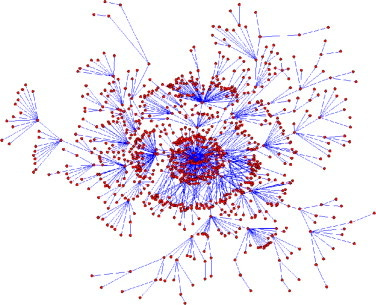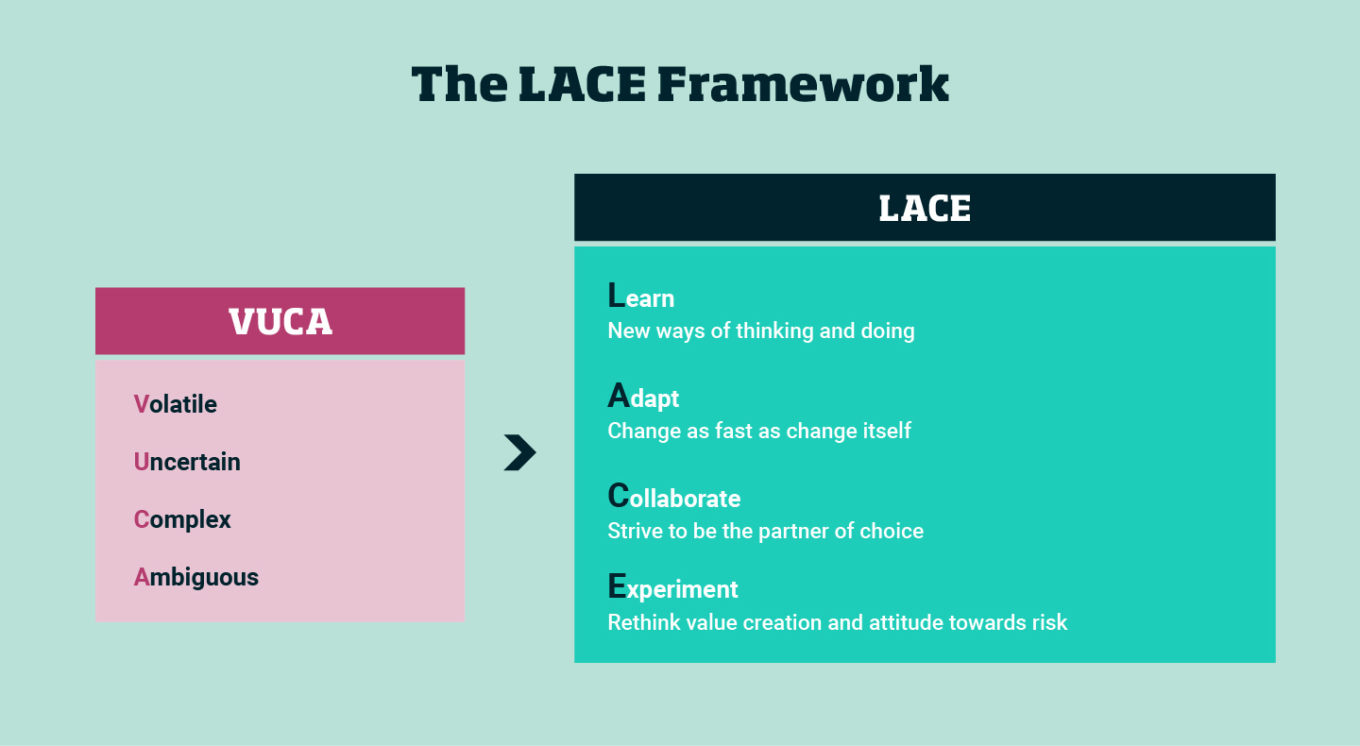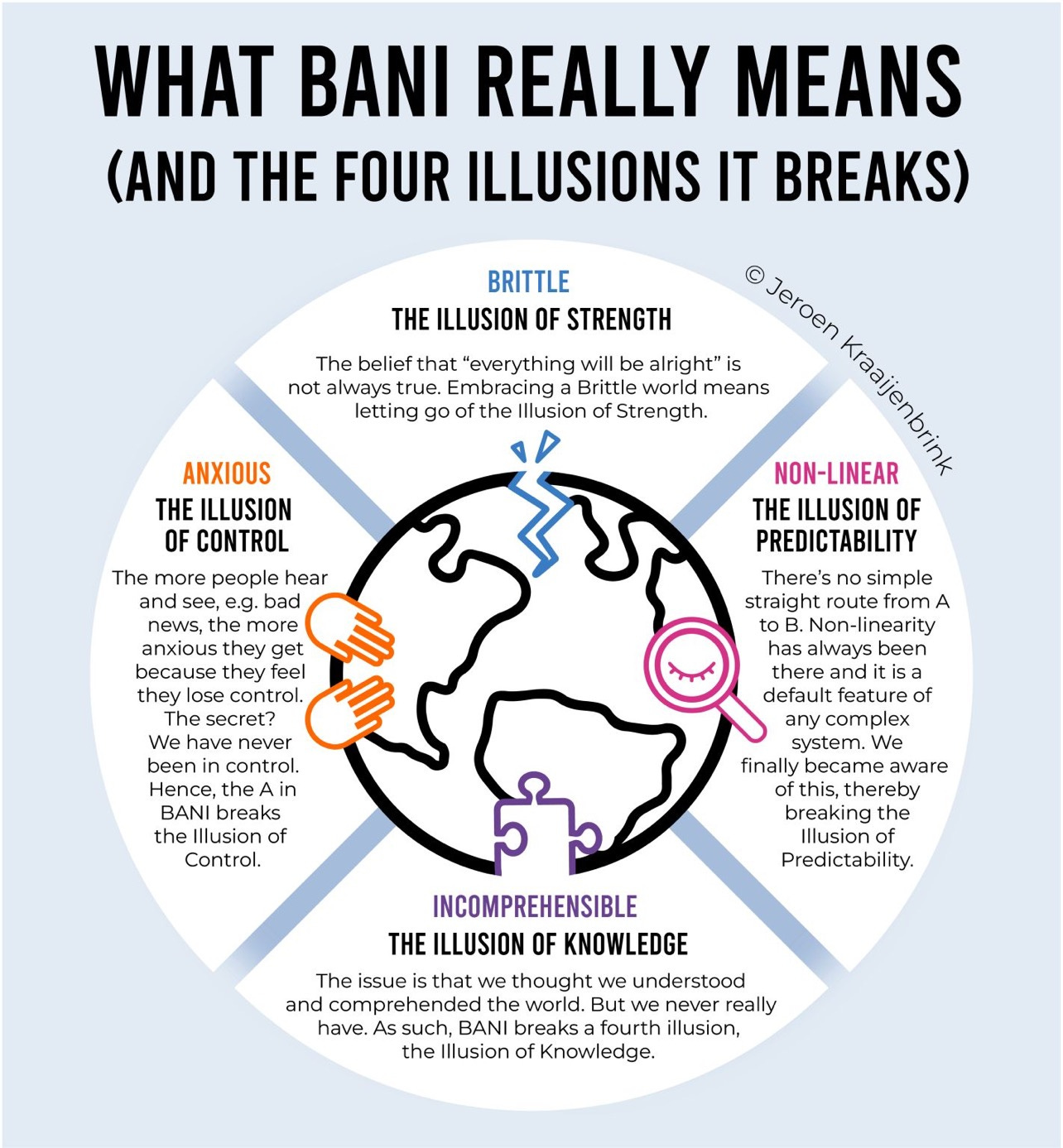“The art of simplicity is a puzzle of complexity” Douglas Horton
Let me start with the end: everything we will talk about here comes down to one fundamental need, the ability to lead oneself and others in difficult times and complex conditions without losing the human edge. It’s about the ability to create actionable simplicity out of the natural and ever growing complexity of our environments, without leaving the individual behind.
A first important step is to understand that simplicity and complexity are important ideas to embrace, however simplistic and complicated, purely pragmatic and intricate are ideas to avoid or at least not to get lost in them.
It is a trait of humility and intelligence to approach any task at hand suspecting its complexity, even if we don’t fully understand it. But it is a trait of mediocrity to make things complicated. Embracing complexity is one thing, creating complicatedness is another.
In searching for a definition of COMPLEXITY, one realizes that even among scientists there is not a unique definition of complexity.
I like this one as a working definition (Wikipedia from 2 references: Steven Johnson, 2001; and the Santa Fe Institute, 2022):
“Complexity characterizes the behavior of a system or model whose components interact in multiple ways and follow local rules, leading to nonlinearity, randomness, collective dynamics, hierarchy, and emergence"
Complexity emerges from the sum of interactions that lead to newer hierarchies.
When what you have in front of your eyes is growing complexity, you need to first make sense by recognizing patterns, categorizing information, organizing and simplifying in order to articulate actionable responses to lead change within your sphere of control. Easier said than done, but this is where the simple acronyms of our complex times come to play.
VUCA
VUCA is the acronym for Volatility, Uncertainty, Complexity and Ambiguity. It is often presented as coined by the military, but the origin is different. The US military adopted it in the 1990’s in response to the collapse of the Soviet Union to find new ways of seeing and responding under complex emerging geopolitical conditions.
However the origin of VUCA is not in a US military classroom but in the mid 1980’s original work by Warren Bennis and Burt Nanus titled “Leaders. The strategies for taking charge”.
The idea developed by Dennis and Nanus aimed to provide a framework to help executives think of challenging external conditions that would affect corporate leadership. It is in this context that it’s a simplification to say that “we live in a VUCA world”; as opposite to use it as a framework to help analyze external conditions to contextualize responses; more like “we live in a complex world, let’s review current assumptions across VUCA categories”. This is indeed more sophisticated.
Think of VUCA as a matrix for analysis
Let’s take a step back and play with the idea of the opposite to the so-called “VUCA world”.
If VUCA describes a world that went bananas; then the opposite world, the one we should strive to go back to, would be the SPEC world, right?
Before Volatility, Stability
Before Uncertainty, Predictability
Before Complex, Easy
Before Ambiguous, Clear
But did SPEC ever exist?
I am not going to deny that there are particular contexts or historical conditions more challenging or unprecedented than others; and I am sure that there were moments that felt SPEC-like in the life of a person, a country, a business. No point in denying that. But when you think of Leadership as the need and the ability to drive change, one has to embrace VUCA-like scenarios and conditions as part of the norm; whether they are blatantly obvious (economic collapses, wars, new and challenging regulatory environments, technological breakthroughs disrupting entire industries, social unrest, etc), or they are more subtle to find the right conditions for change.
We do not live in a VUCA world, we need to deal with VUCA conditions. To think this way helps create a different mindset. We can continue using “VUCA world” colloquially, but understanding the difference is critically important.
This is why I plant a flag here, even if controversial… SPEC never existed as a way to describe the world. There has never been a SPEC world that one day turned into a VUCA world, it is a continuum of circumstances with their own peaks and valleys.
I prefer to think that there are more “SPEC-like” circumstances and more “VUCA-like” contexts at different points in time that have to be thoroughly analyzed in order to make the best out of each epoch.
It is the job of the leader to thrive in uncertainty.
The response to VUCA:
VUCA and LACE
The world of acronyms is fascinating and this made-up journey I created from SPEC to VUCA, to VUCA and LACE to BANI, is a simple way to first describe conditions and human behaviors to understand how to best craft responses to go from tactical response to strategic growth.
Let’s now review a new definition for VUCA and introduce LACE to help us manage and grow in “the VUCA world”
1. To VUCA conditions give VUCA leadership!
To Volatility the leader doubles on Vision
To Uncertainty the leader seeks Understanding
To Complexity the leader works on Clarity
To Ambiguity the leader prepares with Agility
2. Also, to VUCA conditions respond with LACE questions
LACE is meant to help “VUCA-proof” your team, organization. In the words of Louise Muhdi, affiliate professor of Innovation and Strategy at IMD (International Institute for Management Development, Lausanne, Switzerland), in 2021 she created the LACE framework in an attempt to help executives more effectively respond to a rapidly changing business environment. It is built on four pillars and a checklist of question for action: learn, adapt, collaborate, experiment (LACE).
Learn
Checklist questions:
How do you embrace new ways of thinking and doing?
How do you train the curiosity muscle to identify and act on opportunities?
What systems are in place for active and continuous learning?
Adapt
Checklist questions:
Can you transform at the speed of change?
How does your organization engage in rapid adaptation and increase its flexibility?
How focused are you on customer centricity?
Collaborate
Checklist questions:
How are you striving to be a partner of choice?
How do you foster a common purpose in your organization?
Do you co-create with partners in a way that offers shared value?
Experiment
Checklist questions:
Does your organization learn by doing?
How often do you rethink your value creation strategy?
Do you engage in “sense-making” – interpreting and seeing potential in new ideas, trends and technology?
But here comes the biggest realization of all: It’s not about the world, It’s about us!
BANI
Finally, the new kid in the block, BANI. Introduced in 2020 by James Cascio, an American anthropologist and futurist author, the aim is not to think how to respond to VUCA, instead offers an alternative description focused on how we humans feel in the “VUCA world”: brittle, anxious, non-linear and incomprehensible.
BANI can be described as a reality check, a tool for deep self-awareness to destroy what the author describes as “the four illusions of humanity’s current perceptions of the world”. BANI helps capture not the descriptions of a chaotic world (VUCA) but the human feelings in that chaotic world.
I believe it is more important than ever to focus in understanding what the individual is deeply feeling and what the consequences for society as a whole can be, rather than only focusing on the approaches that leadership frameworks provide to help deliver results in a complex reality; as if the individual that needs to drive it is a non-variable, without profound transformational feelings. The VUCA world produces a sense of loss and confusion, a sort of perpetual “what is going on?” and “how do I fit here?”, that I think are going to be increasingly destabilizing of the human condition as the world transitions into the fourth industrial revolution.
Typically we look at technology first and humans second, but how does it feel to live in a world of chaos?
BANI is a way of giving a name to feelings
Brittle - when it breaks it shatters, it breaks hard, there is no strength at all.
Anxious - when it feels to never be in control, to not knowing what to do.
Non-linear - when inputs and outputs seem disconnected, non predictable.
Incomprehensible - when what you think you should understand, it doesn’t make sense anymore. I should know, but I don’t.
BANI represents the subjective experience to the world we live in and the conditions we have to face to make sense of a particular situation.
The human can break (and break bad) if the ideas of Knowledge, Control, Predictability and Strength are completely taken away.
If then these ideas are illusions and not reality, we humans have to embrace these illusions with mindfulness to calm the mind and put our energy into growing resilient and anti-fragile (to avoid feeling brittle), kind, socially skilled and empathetic (to avoid feeling anxious), with the ability to improvise and a deep sense of intuition (to avoid feeling that we don’t know anything anymore), and with critical thinking and first principle skills (to avoid feeling lost in a non-linear, exponential world).
In conclusion, I have tried to summarize the context and implications that I think should be considered when interpreting these acronyms to lead under hugely complex circumstances.
I also tried to challenge the idea of VUCA as a catchall idea for “It’s a crazy world out there” and provide a more nuance perspective when evaluating external conditions as part of any good SWOT analysis, developing specific responses to those conditions, building capabilities, foster continuous growth and very important, understanding the impact to the human condition as the illusions of knowledge, control, predictability and strength are completely shattered.
We need to embrace the human.
Reality cannot be replaced by dystopia.
The response has to be accurate and bold, but humane and paced… a day at a time. With a new capability, a new chapter, a new skill, a new social interaction, a new sense of belonging, a new feeling of love, and a new sense of purpose and the ability to make a difference; one day at a time.
P.S. Before I go, here you have “The Treat,” where I share some of the music that kept me company while writing … Enjoy as you bid farewell to this post
Lead yourself, Learn to live. Lead others, Learn to Build.
P.S. If you enjoyed reading this post consider subscribing to this newsletter, joining the community and sharing with someone















Thank you so much Oksana for your feedback. I have to be honest… it was not an easy write but I tried to capture a few powerful ideas through the journey with these acronyms. I’m glad to hear you enjoyed the reading
It’s about the individual… !!!